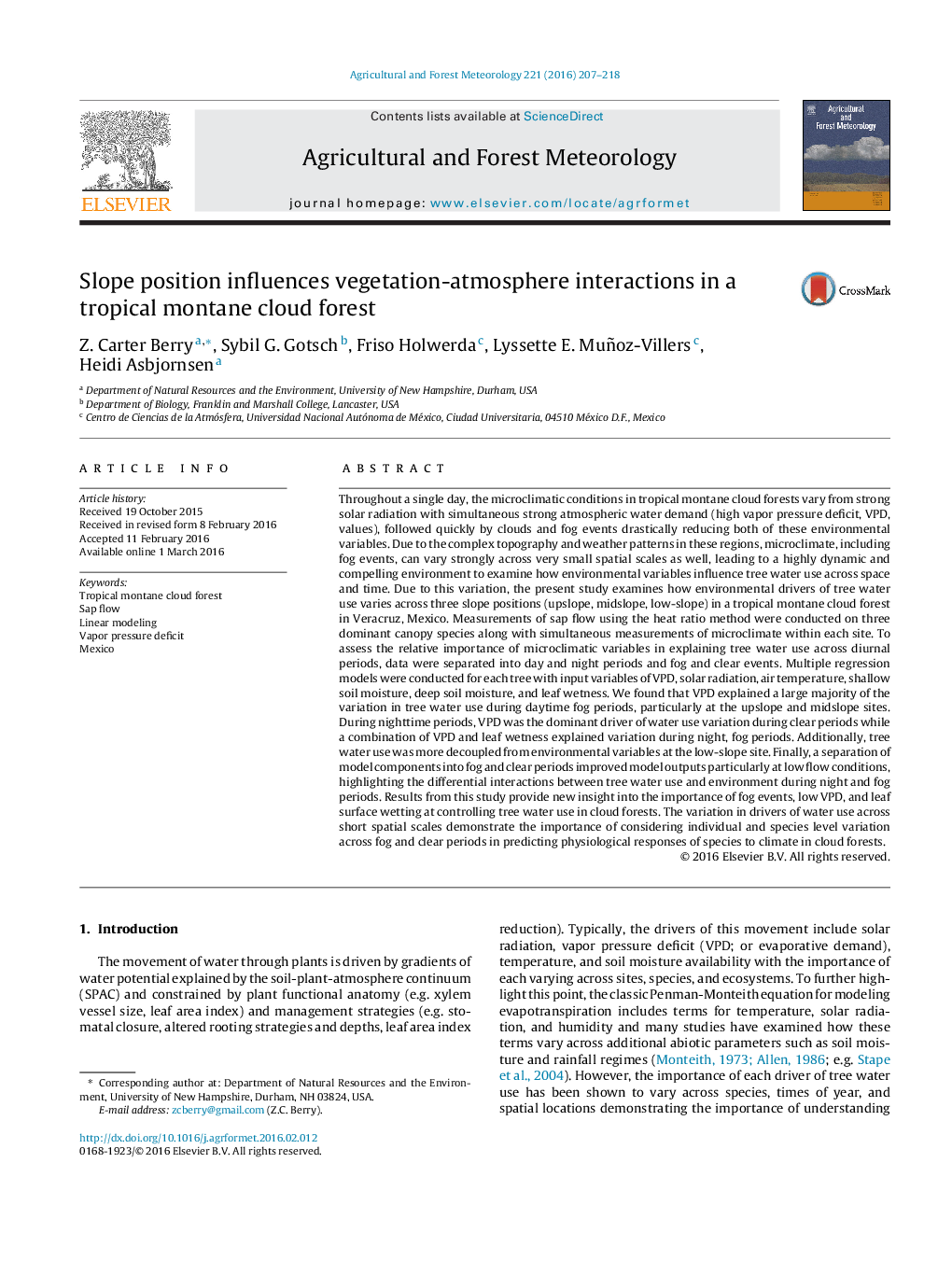| کد مقاله | کد نشریه | سال انتشار | مقاله انگلیسی | نسخه تمام متن |
|---|---|---|---|---|
| 81375 | 158312 | 2016 | 12 صفحه PDF | دانلود رایگان |
• Environmental drivers of tree water use vary strongly across slope positions.
• VPD and leaf wetness explain significant variation in TMCF tree water use during fog.
• Environmental drivers shift in important from day to night periods.
• Separating modeled tree water use into fog and clear periods improves model outputs.
Throughout a single day, the microclimatic conditions in tropical montane cloud forests vary from strong solar radiation with simultaneous strong atmospheric water demand (high vapor pressure deficit, VPD, values), followed quickly by clouds and fog events drastically reducing both of these environmental variables. Due to the complex topography and weather patterns in these regions, microclimate, including fog events, can vary strongly across very small spatial scales as well, leading to a highly dynamic and compelling environment to examine how environmental variables influence tree water use across space and time. Due to this variation, the present study examines how environmental drivers of tree water use varies across three slope positions (upslope, midslope, low-slope) in a tropical montane cloud forest in Veracruz, Mexico. Measurements of sap flow using the heat ratio method were conducted on three dominant canopy species along with simultaneous measurements of microclimate within each site. To assess the relative importance of microclimatic variables in explaining tree water use across diurnal periods, data were separated into day and night periods and fog and clear events. Multiple regression models were conducted for each tree with input variables of VPD, solar radiation, air temperature, shallow soil moisture, deep soil moisture, and leaf wetness. We found that VPD explained a large majority of the variation in tree water use during daytime fog periods, particularly at the upslope and midslope sites. During nighttime periods, VPD was the dominant driver of water use variation during clear periods while a combination of VPD and leaf wetness explained variation during night, fog periods. Additionally, tree water use was more decoupled from environmental variables at the low-slope site. Finally, a separation of model components into fog and clear periods improved model outputs particularly at low flow conditions, highlighting the differential interactions between tree water use and environment during night and fog periods. Results from this study provide new insight into the importance of fog events, low VPD, and leaf surface wetting at controlling tree water use in cloud forests. The variation in drivers of water use across short spatial scales demonstrate the importance of considering individual and species level variation across fog and clear periods in predicting physiological responses of species to climate in cloud forests.
Journal: Agricultural and Forest Meteorology - Volume 221, 1 May 2016, Pages 207–218
